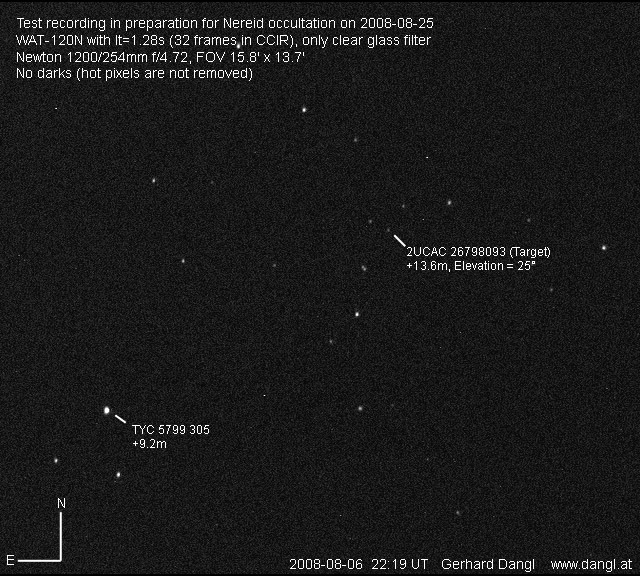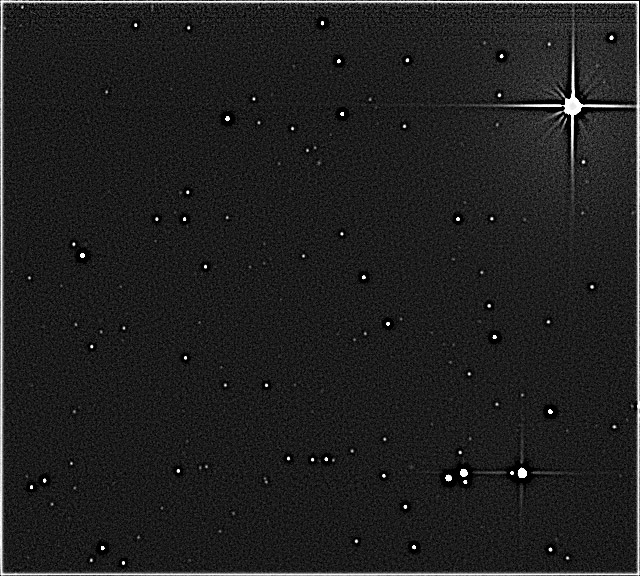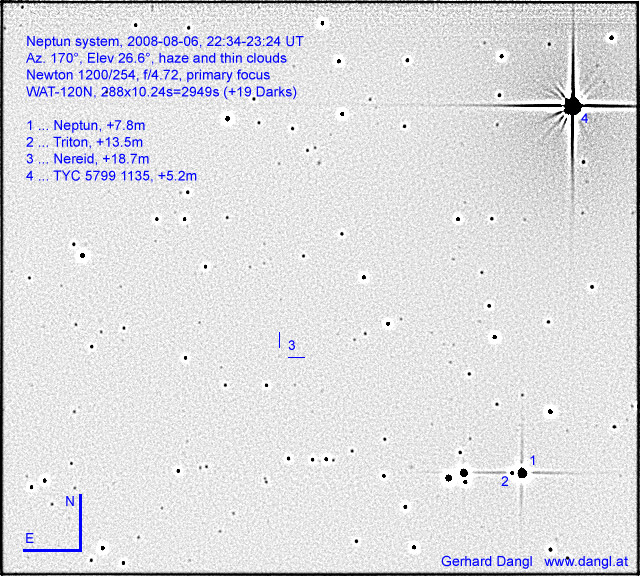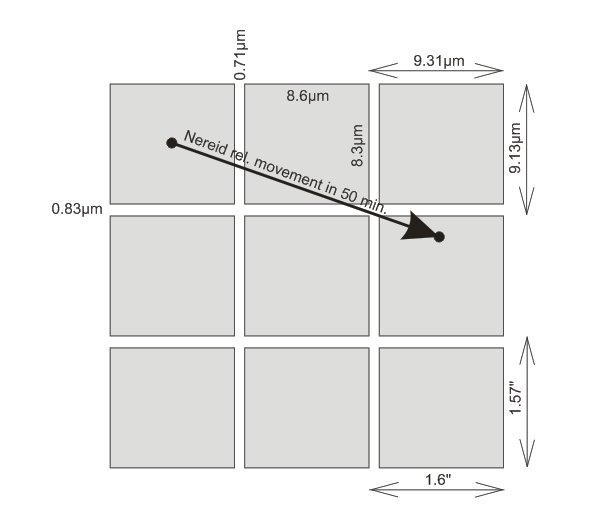| Frameless version of this page |
Neptune system on August 06, 2008
During the recording the Neptune system was in a distance of about 4.3 Billion kilometers. The planet has a diameter of about 49.000 kilometers. At the moment 13 moons are known. The biggest moon Triton with a diameter of 2706 kilometers orbits the planet in only 5.877 days. He was discovered 17 days after the discoverage of Neptune also in the year 1846. The second brightest moon Nereid was discovered in 1949 by Gerard Kuiper. This moon has a diameter of only 340 kilometers and orbits around Neptune in 360 days on the most excentric orbit known at the moment in our solar system. All other moons of Neptune are smaller and recording is much more difficult.
The images below were made with video camera WAT-120N on August 06, 2008 as a test and preparation for the possible occultation of the star 2UCAC 26798093 by the Netune moon Nereid on August 25, 2008 at 22:20 UT. The star has a brightness of +13.6mag and the moon has a brightness of +18.7mag. So if a positive occultation would occur the star brightness would decrease by 5.1mag to the value +18.7mag of the moon Nereid.
| Starfield of the possible occultation on August 25, 2008 |
 |
To get the star 2UCAC 26798093 with +13.6mag stable on images I had to use an integration time of 0.64(x16) oder 1.28(x32) seconds with my 10 inch Newton and WAT-120N. The exact value will depend on sky conditions.
Limit test
To test the limit of the camera I tried to capture the second brightest moon of Neptune Nereid on video. Sadly the viewing conditions were bad. Anyway the moon could be made visible on the records with intense image processing. Over all 288 lightframes and 19 darkframes each with 10.24 seconds were registered and stacked with freeware DeepSkyStacker. The stacked image was processed next with wavelet filters in Registax4. In this way the details existing in the record could be made visible.
| Neptune system with Triton und Nereid on August 06, 2008 |
 |
Inverse image version with labelling |
The moon Nereid with +18.7mag is very near the limit of my 10 inch f/4.72 Newton and the WAT-120N. But because the sight was hazy during this records and limited by thin clouds, under normal conditions +19mag should be obtainable at an elevation of 25 degrees.
The problem of object movement during long time exposures
If the object is moving fast during exposure the light will be split on several pixel during exposure time. So it could be that an object will not be brighter than noise on a CCD pixel. In this case it can not made visible in the image. The same problem may appear if the object is on a different relative location on each exposure. If this images are stacked the object is visible as a line or is to dark behind the noise level. In this case an image stacking centered on the faint object can help.
The situation during recording of Neptune moon Nereid
The moon apparently moved on the sky 4.05 arcseconds per hour and in position angel 250.7 degrees. The exposure time over all was 50 minutes. So Nereid moved 3.38 arcseconds on the sky in this time. Horizontal 3.19 arcseconds to the west and vertical 1.12 arcseconds to the south. In data sheet of the CCD sensor ICX419ALL one can find pixel sizes, pixel numbers and CCD size. So it is possible to calculate the spaces between the pixels. Using a focal length of 1200mm I got 1.6 x 1.57 arcseconds on sky per pixel.
| Pixel matrix of WAT-120N CCIR (CCD Sensor ICX419ALL) |
 |
We can see that the Neptune moon Nereid has moved in RA over two pixel to the west and in DEC only one pixel to the south during my 50 minutes recording. Obviously this was not too much and the moon could be made visible on the image.
But the light point of a fixed object also will be spreaded over several pixel due to the seeing effects.
August 25, 2008 |
|
Site Home |